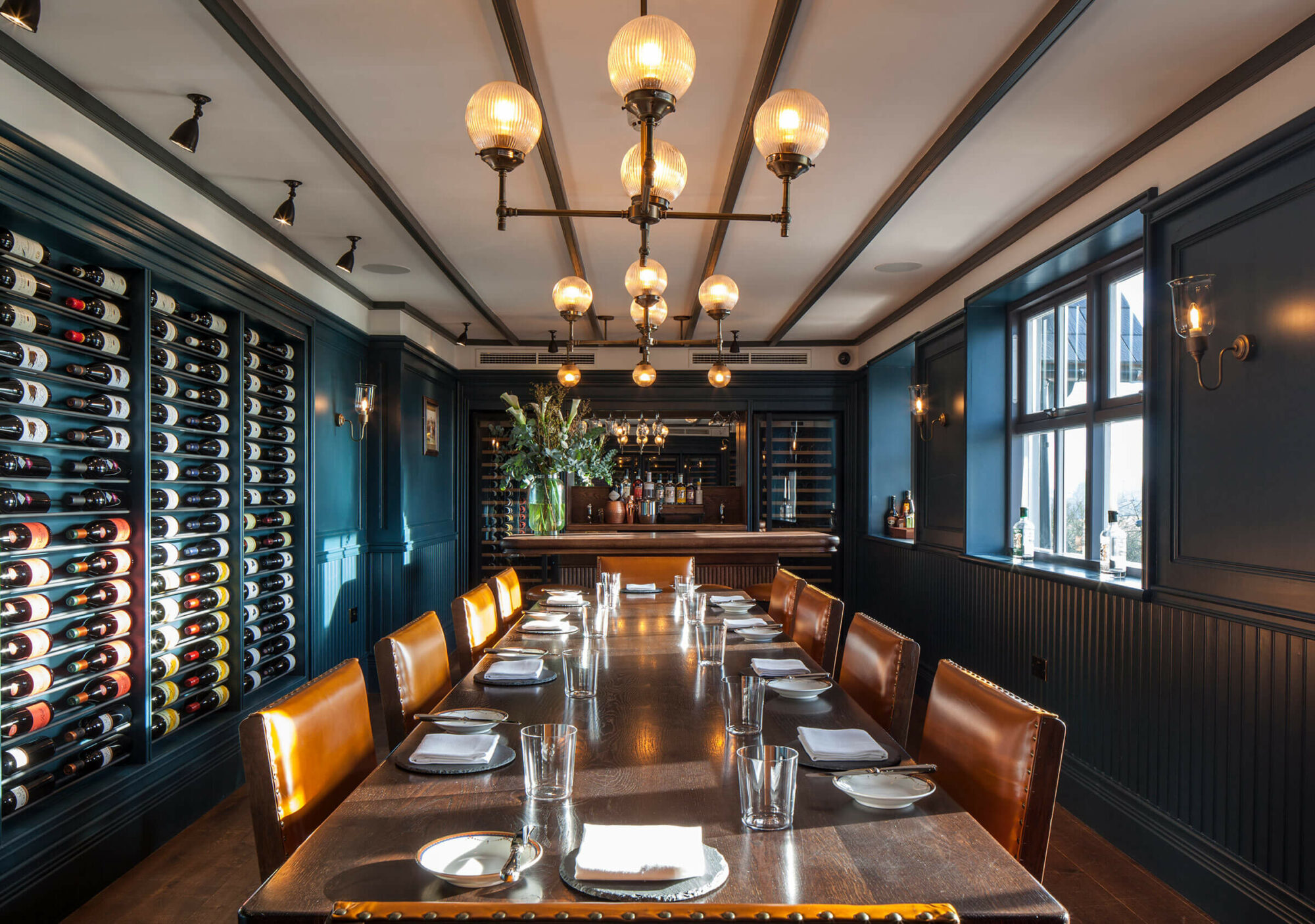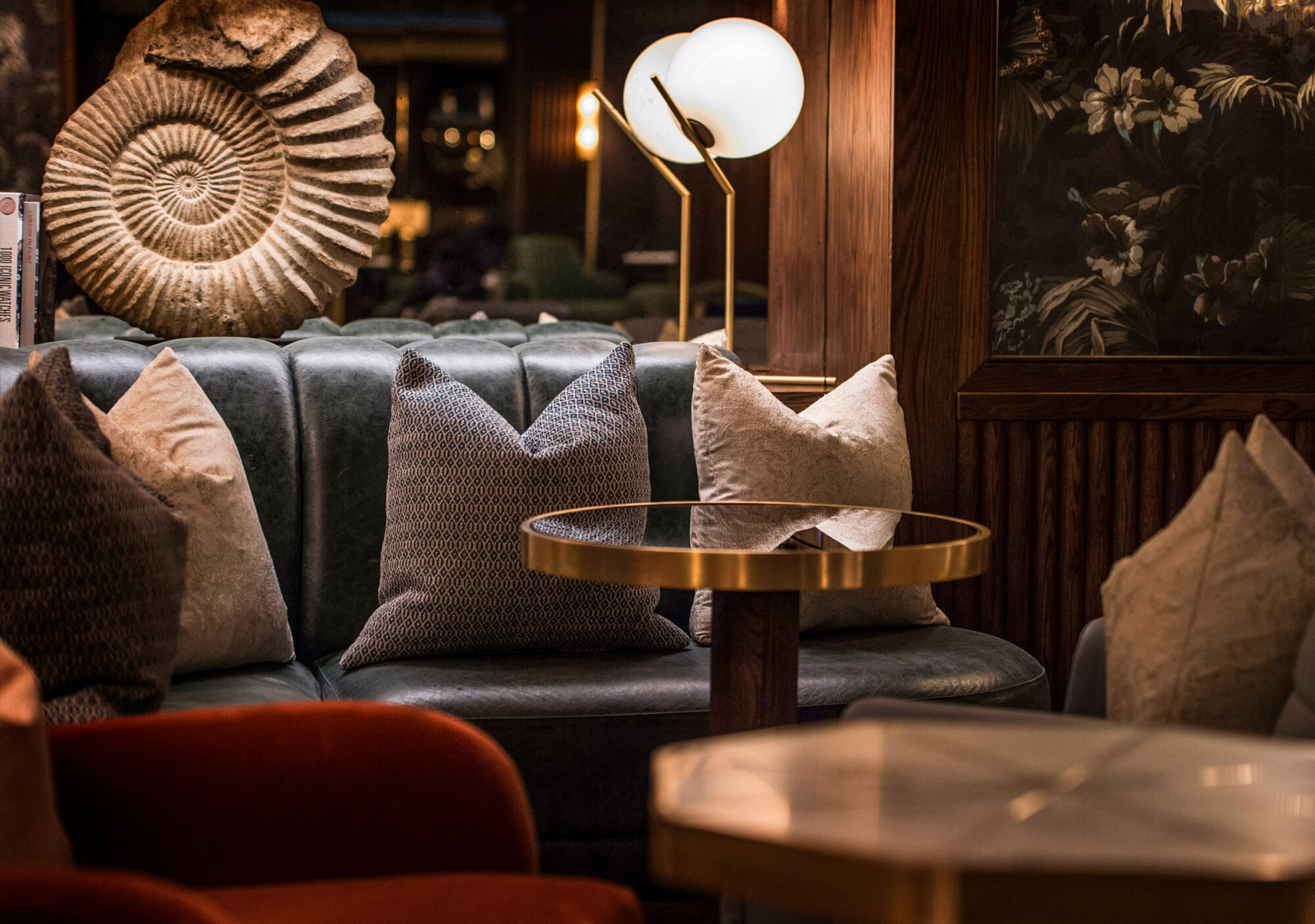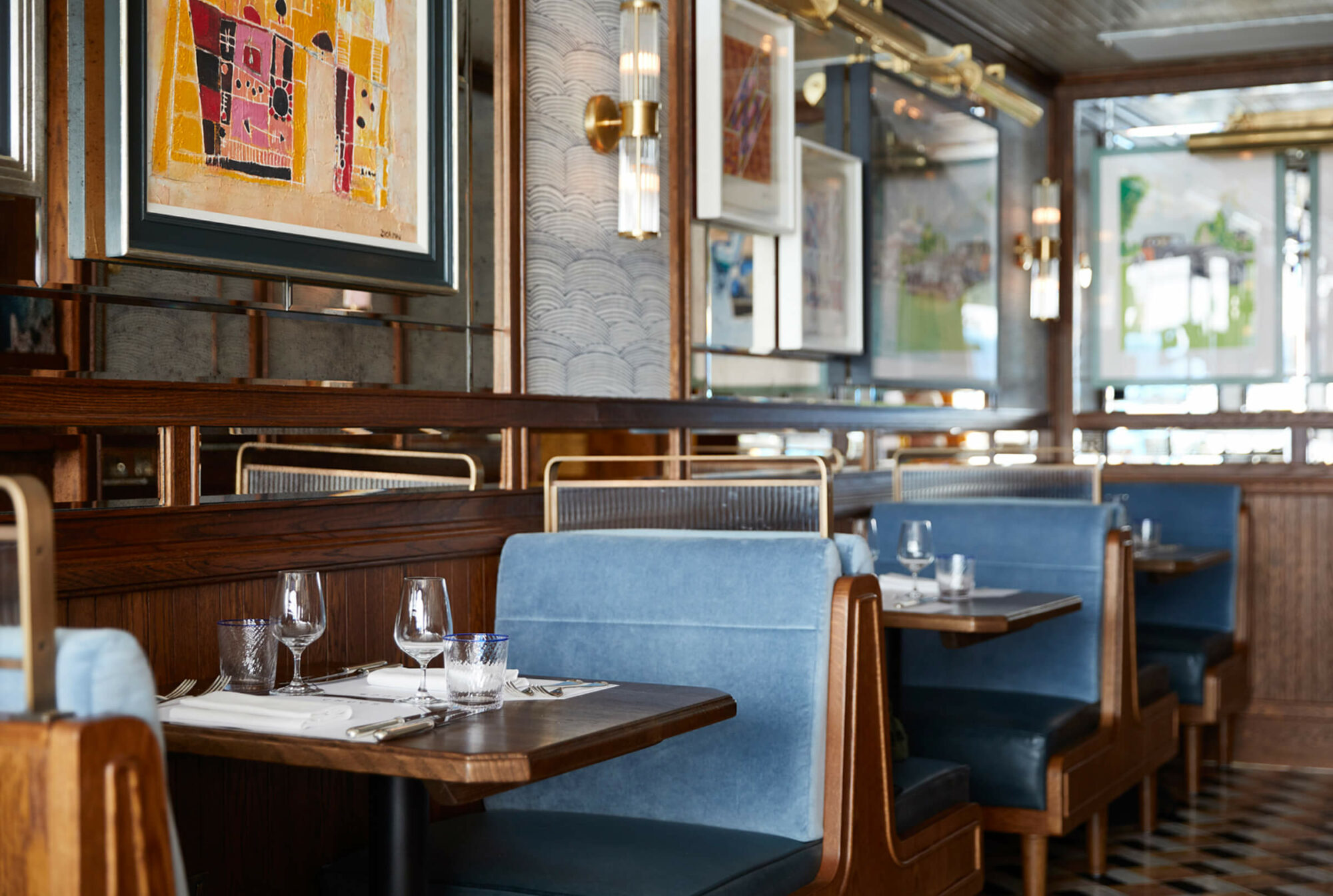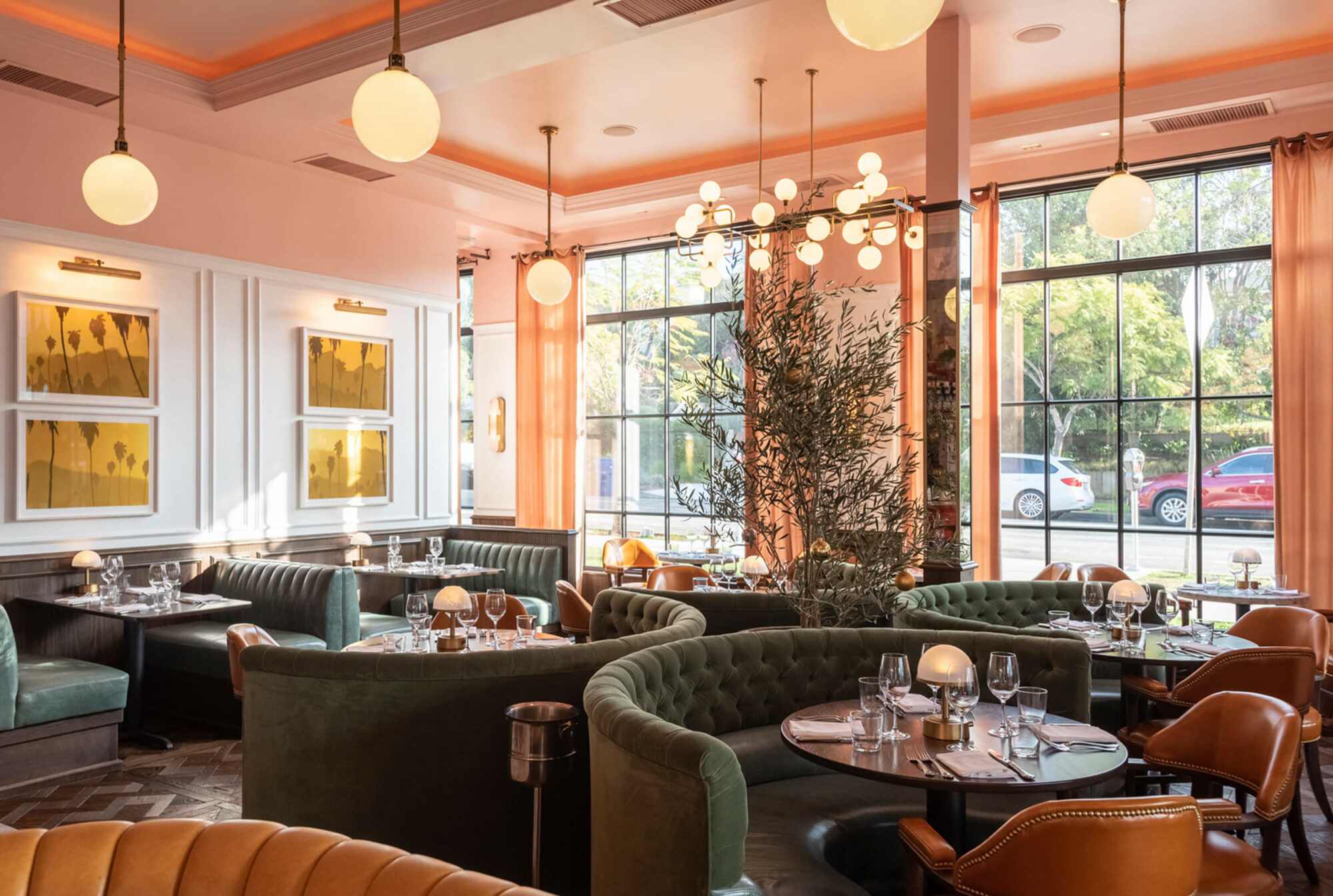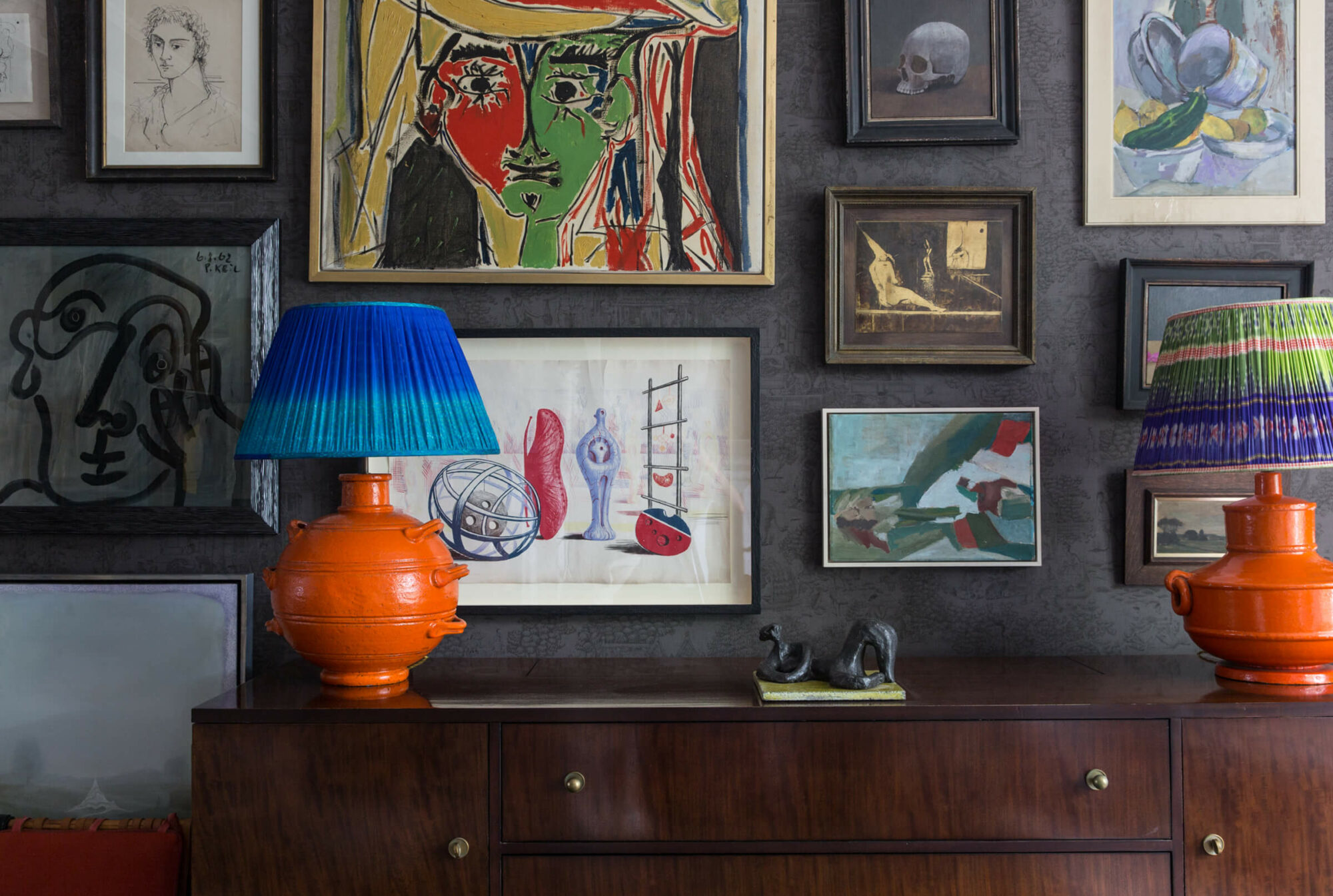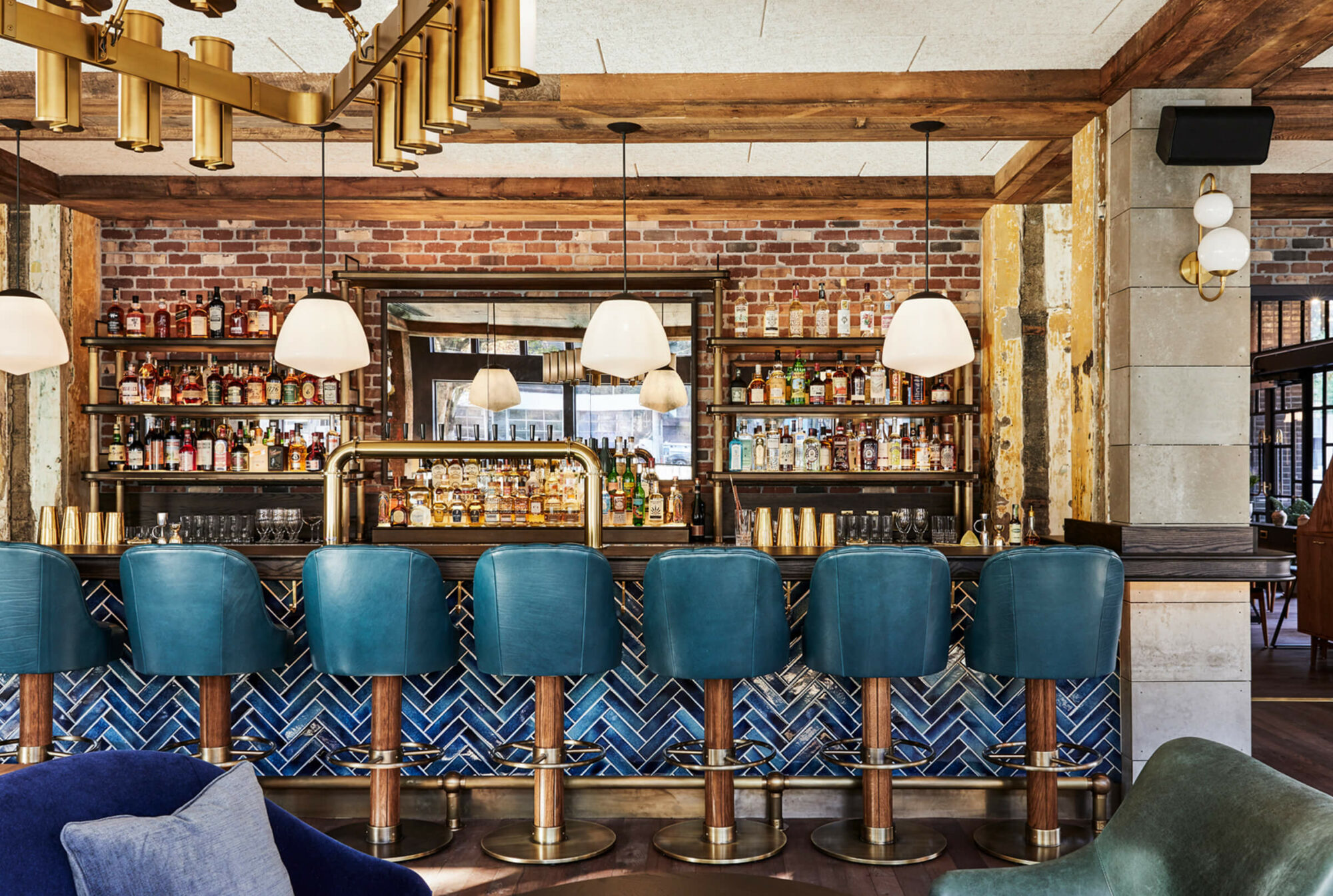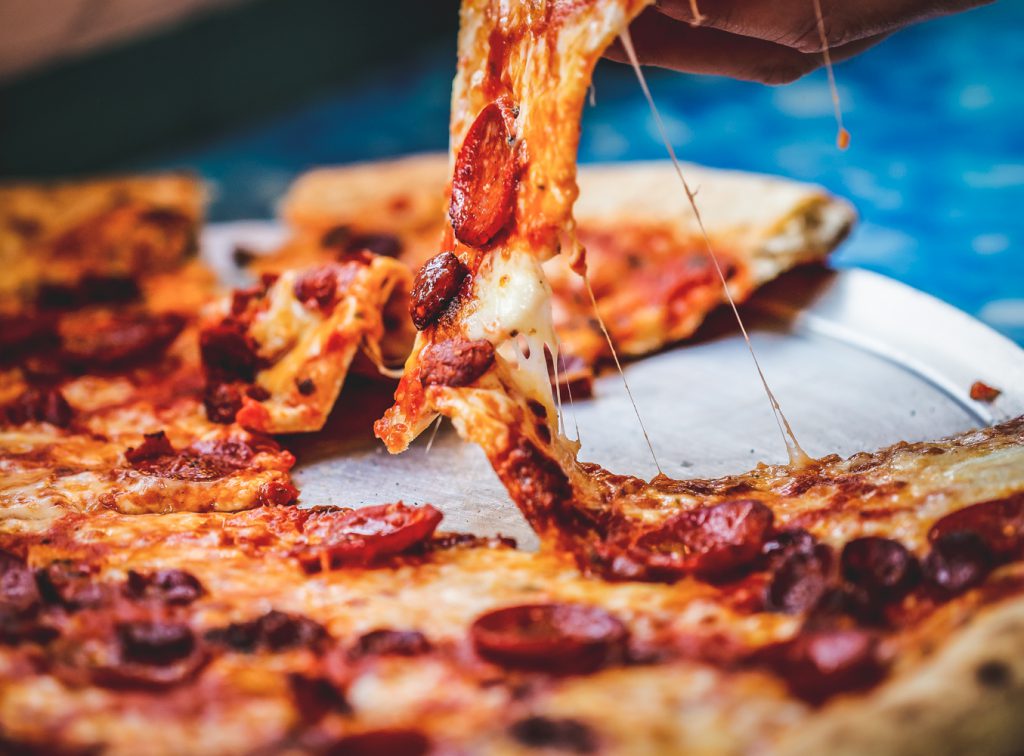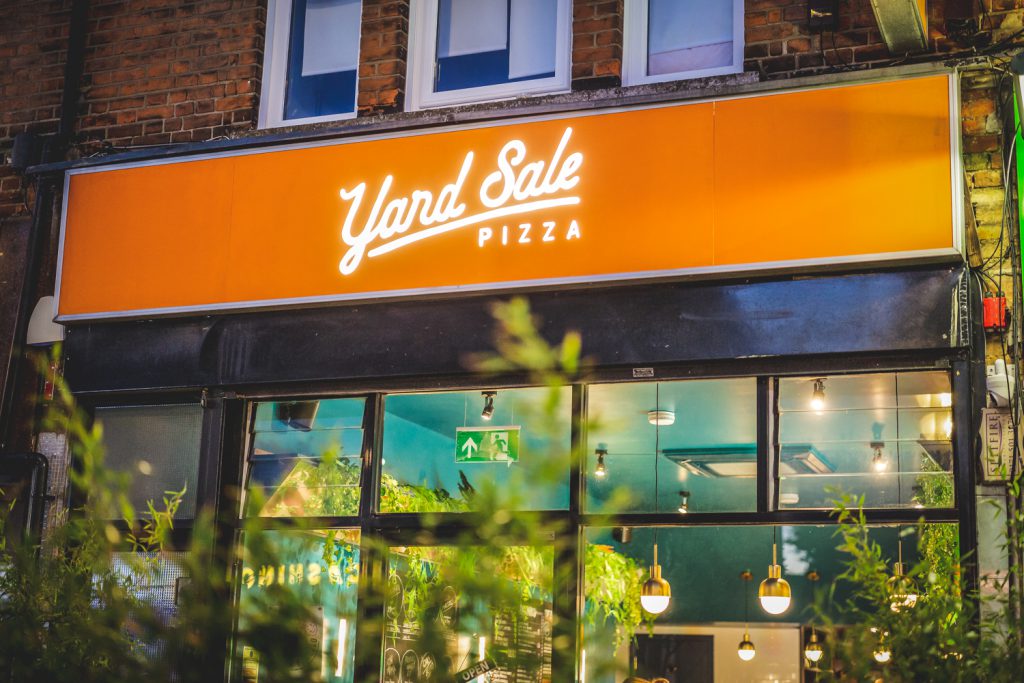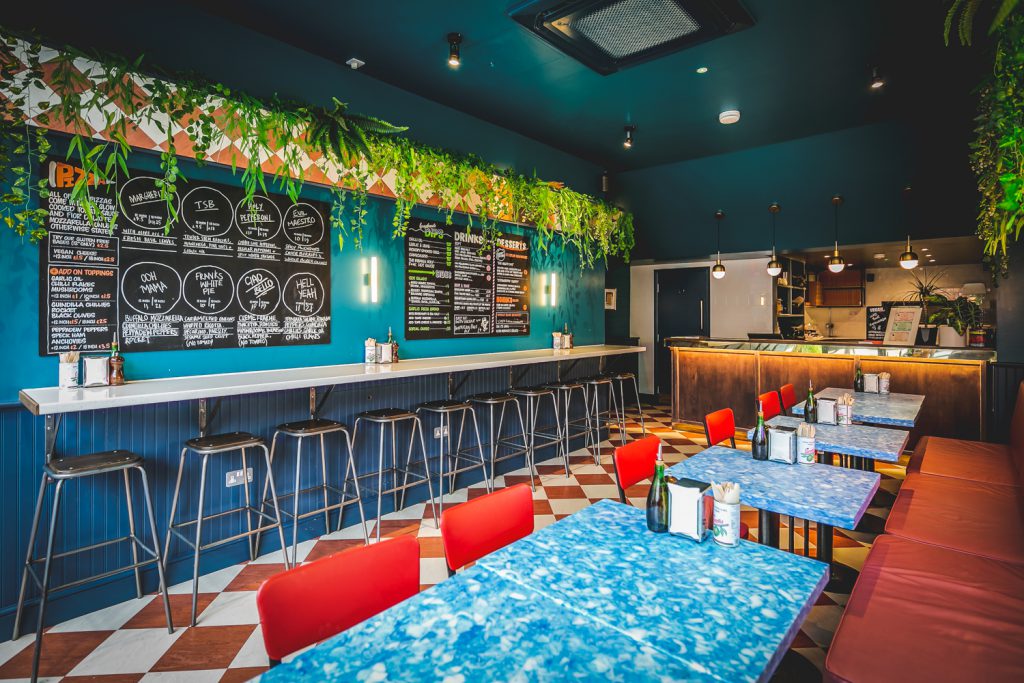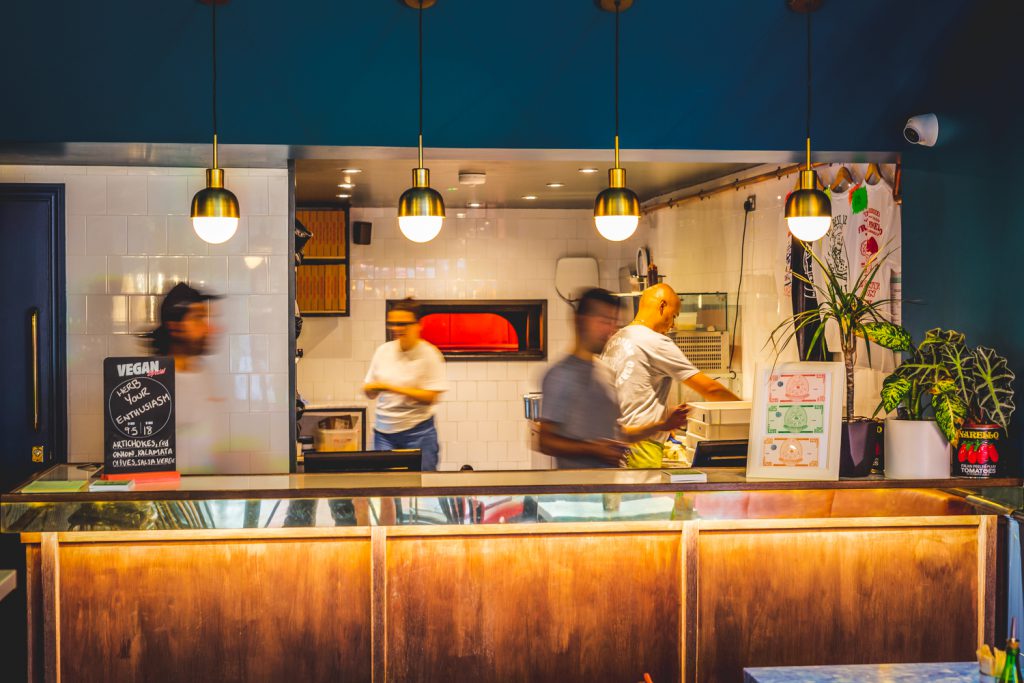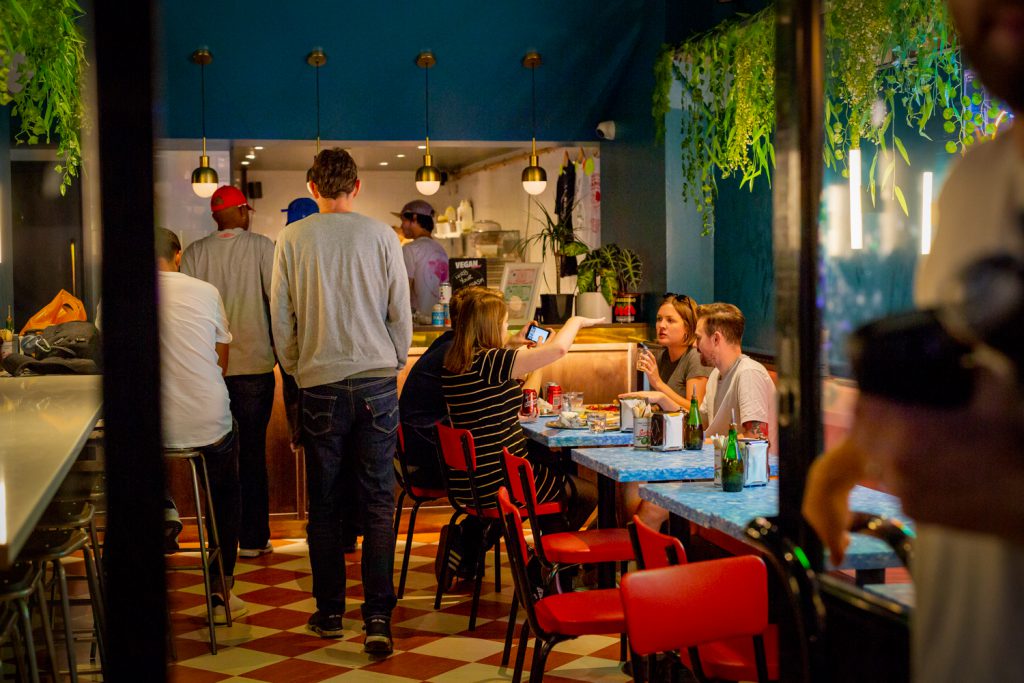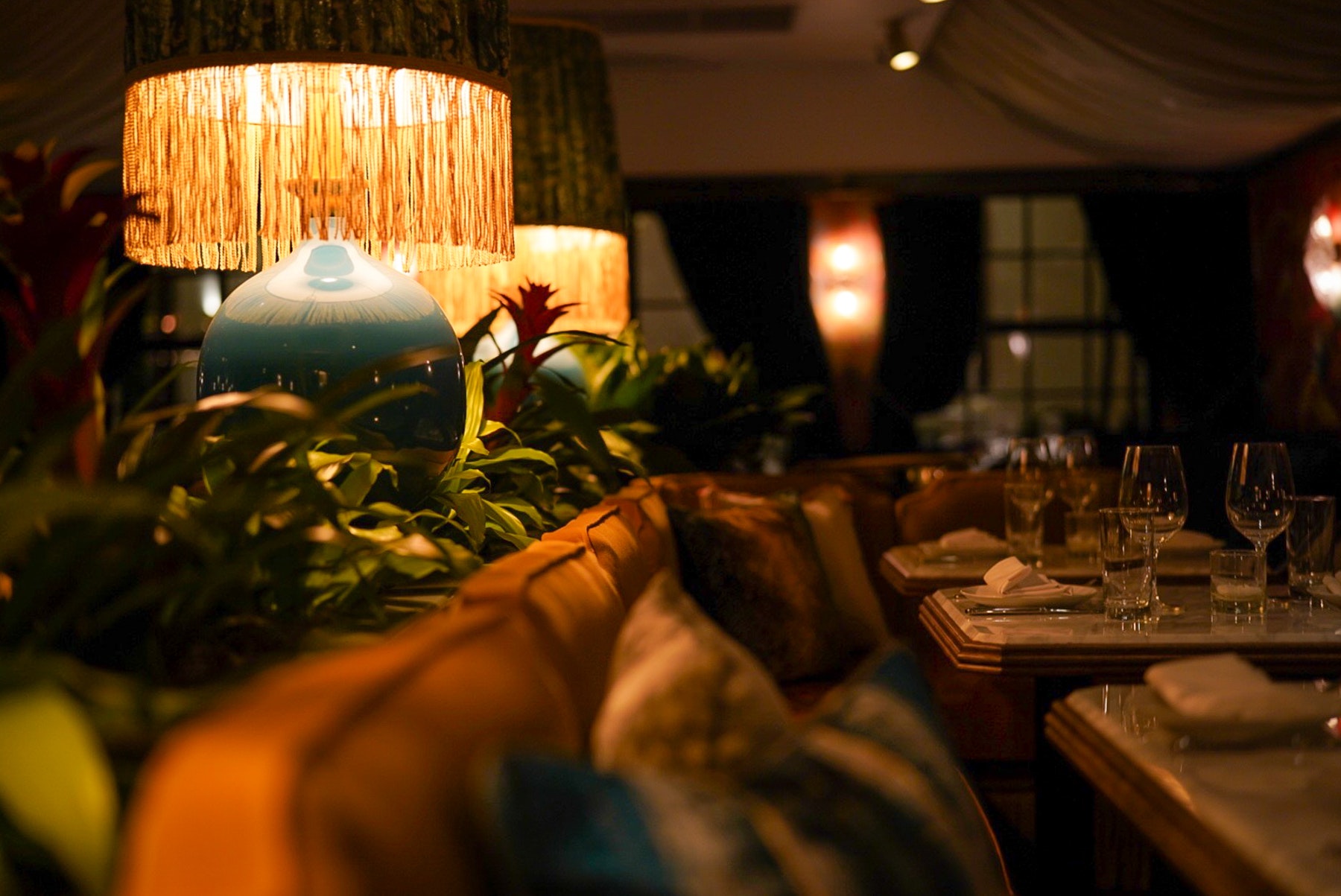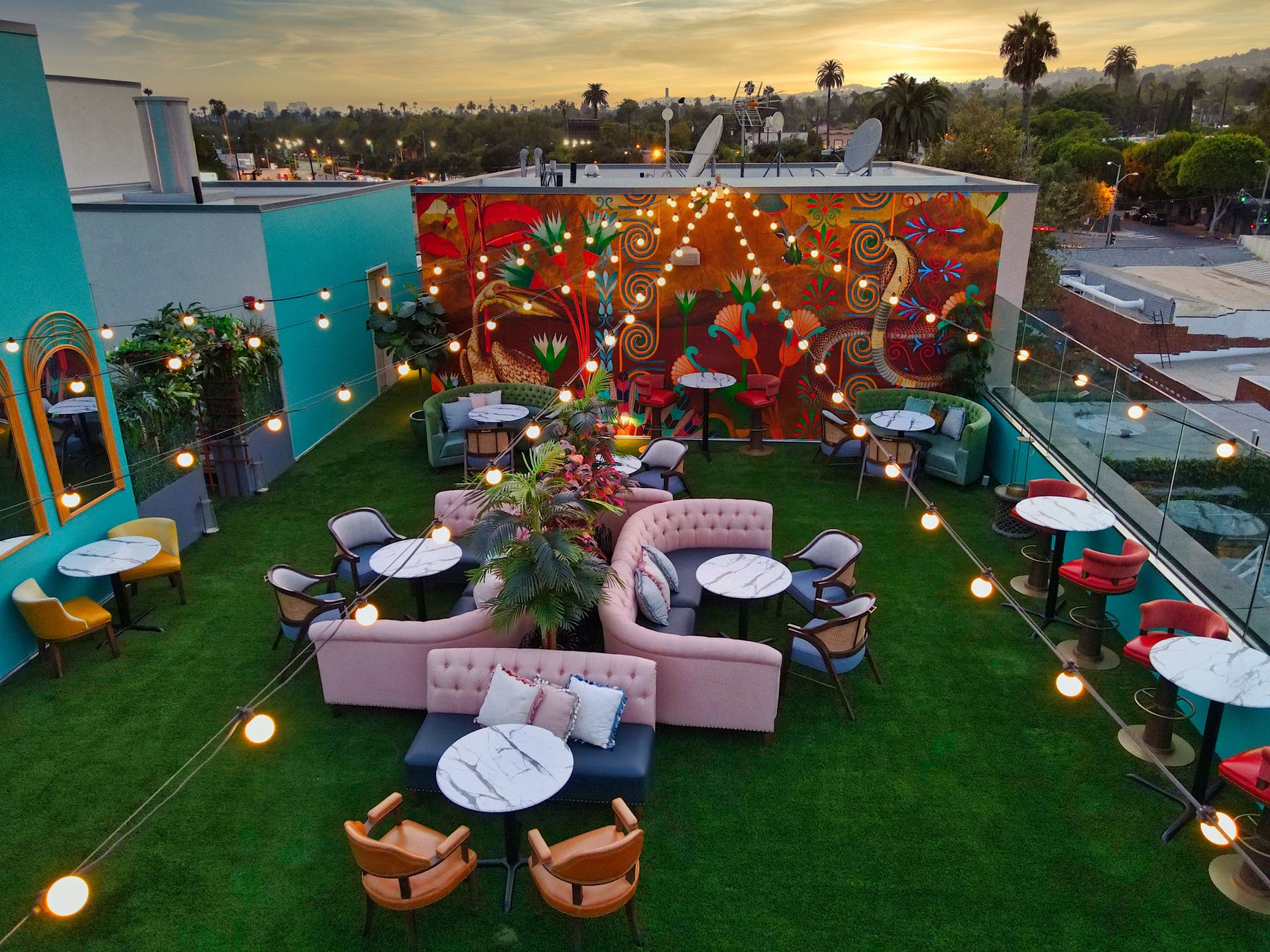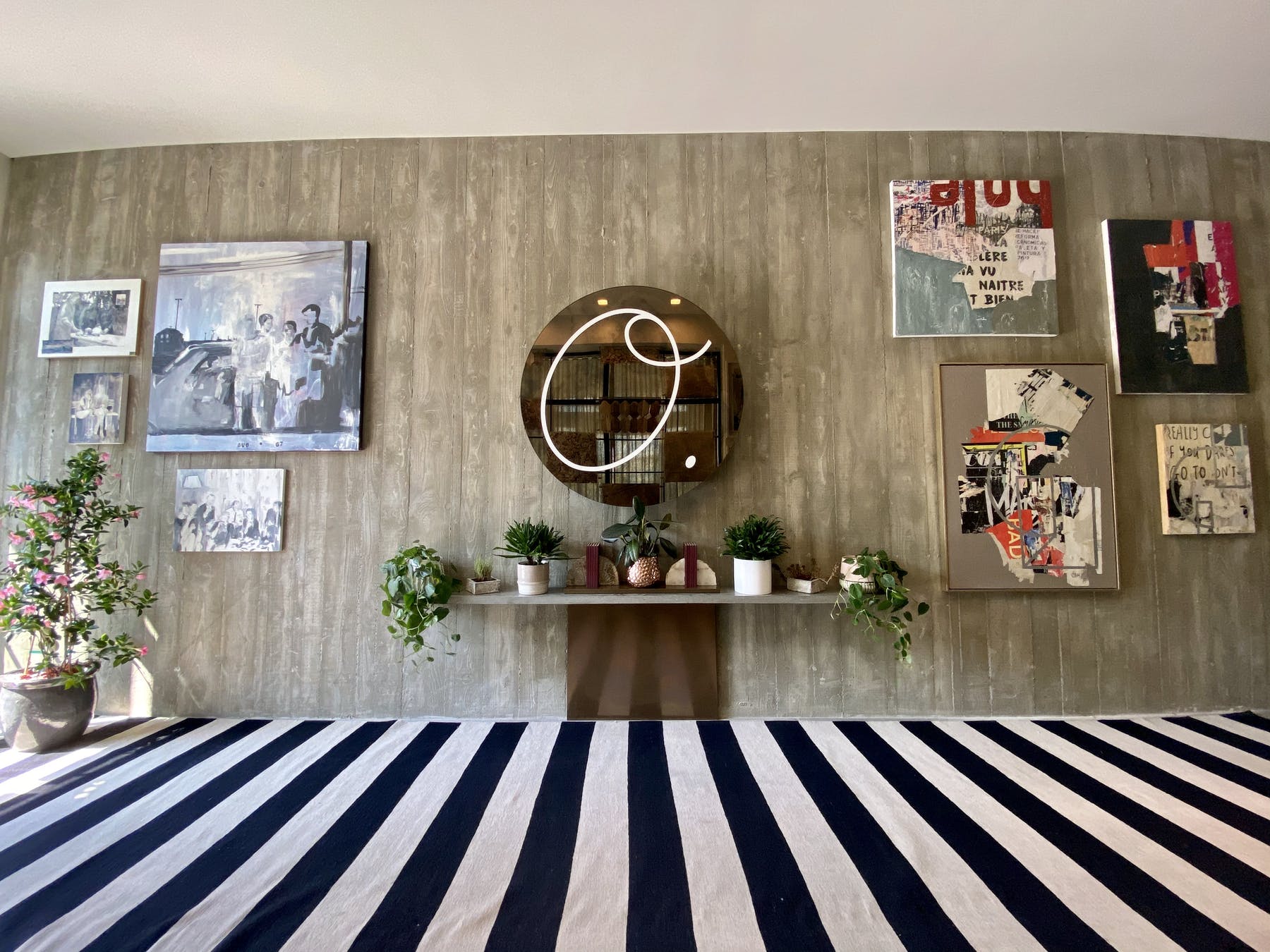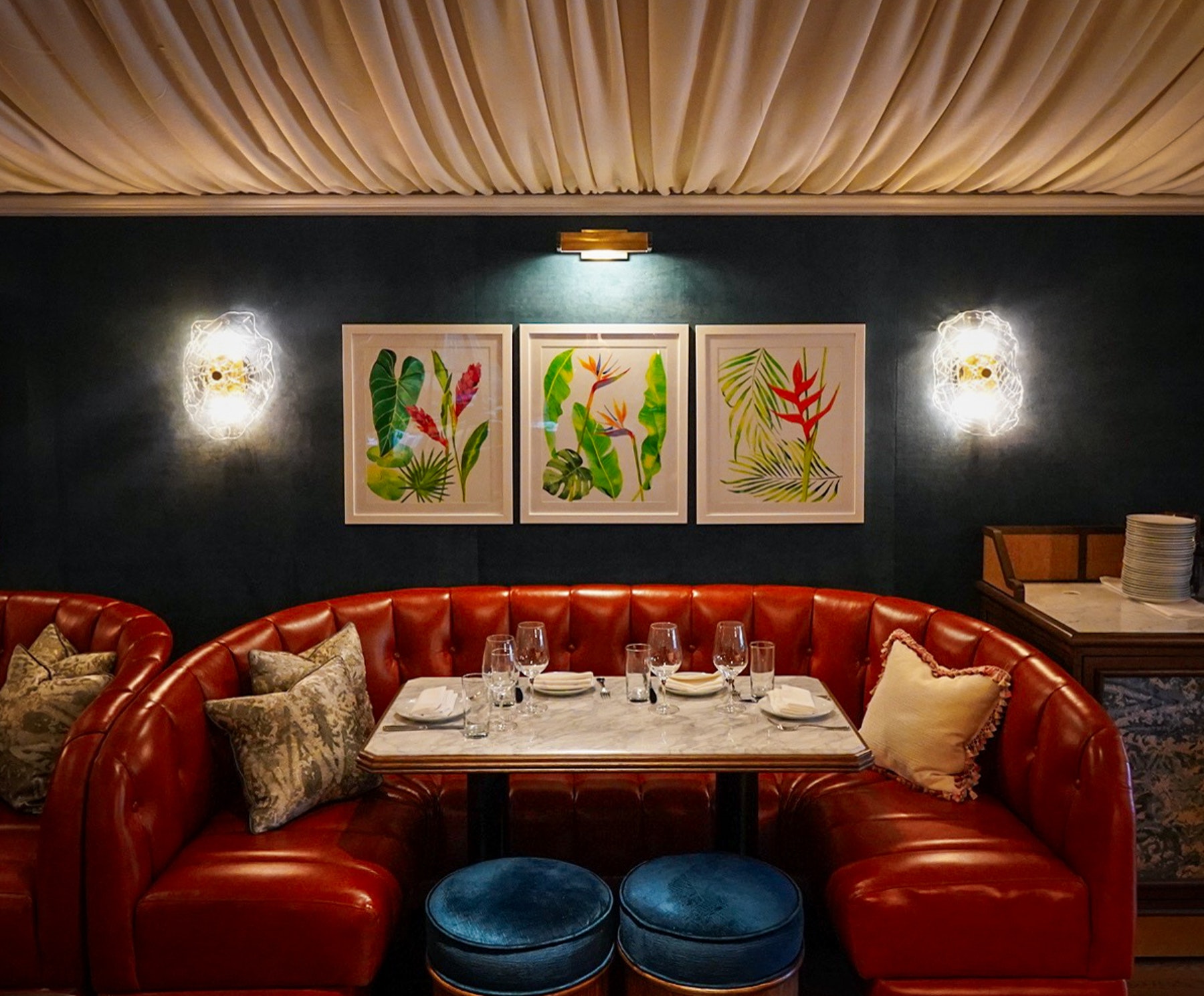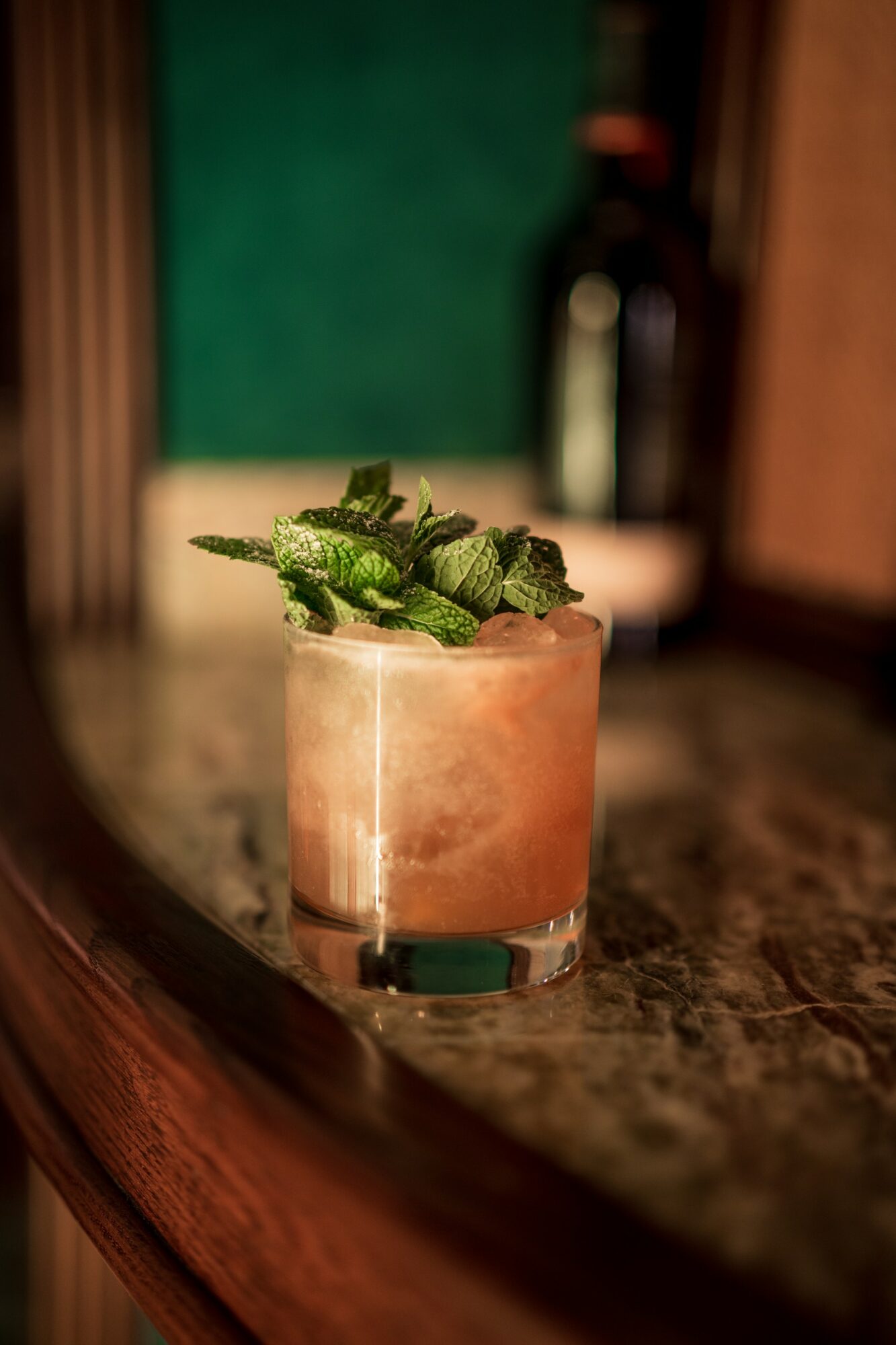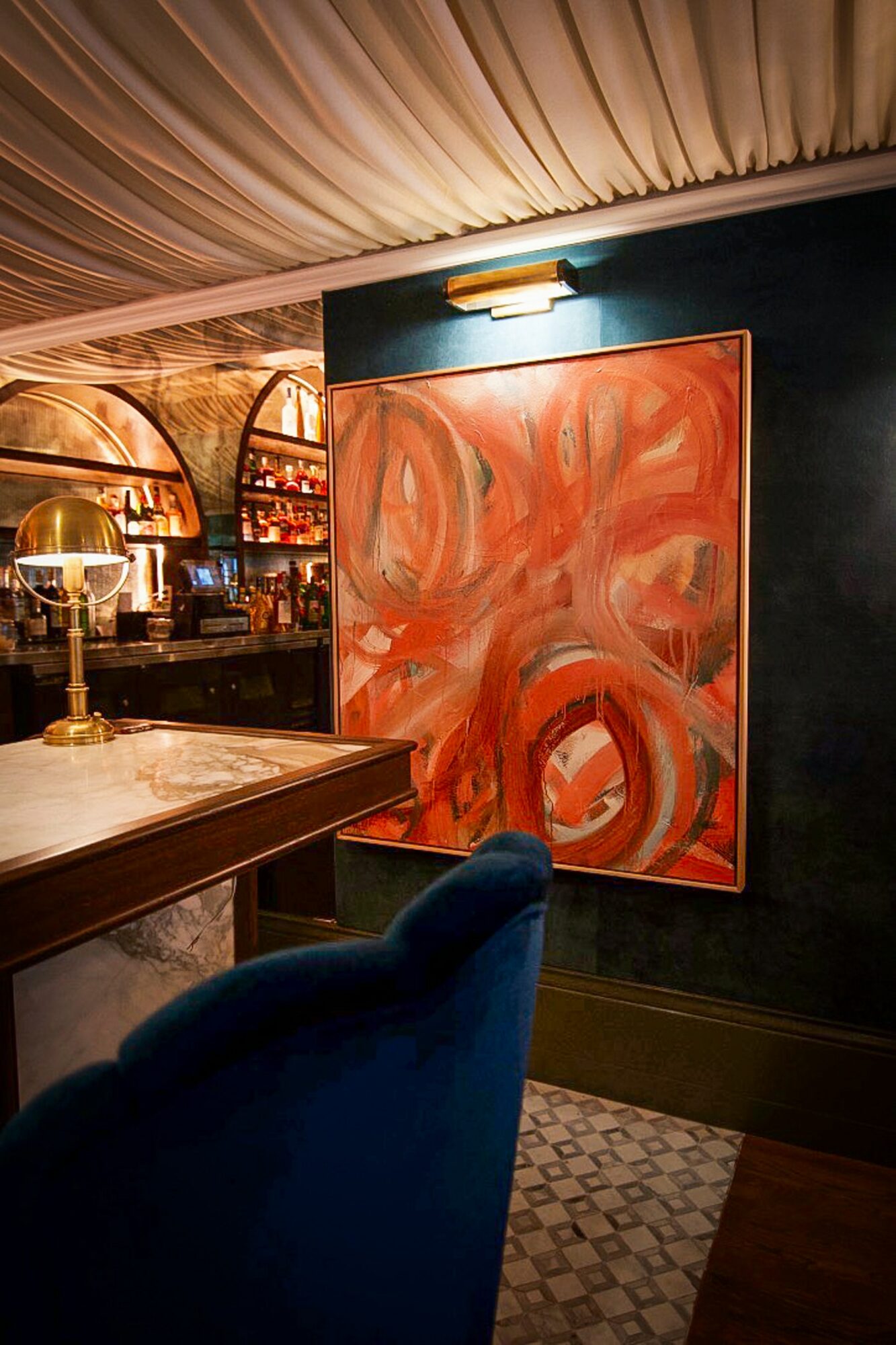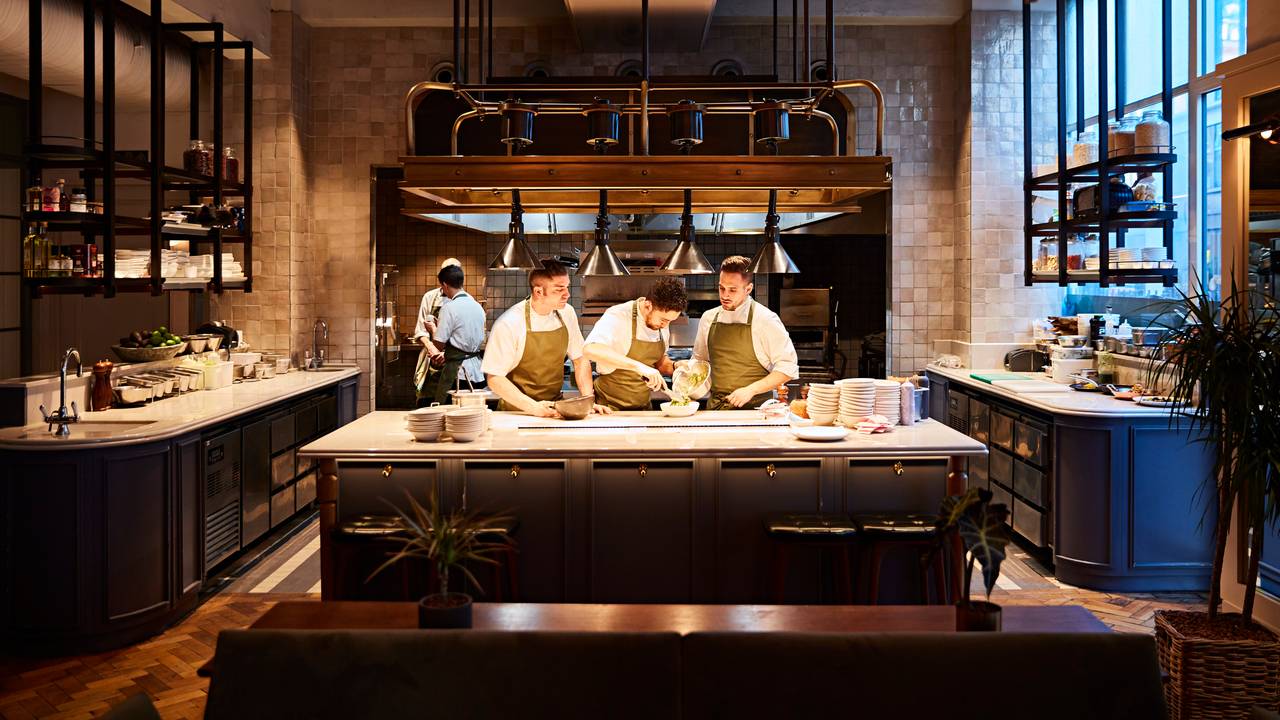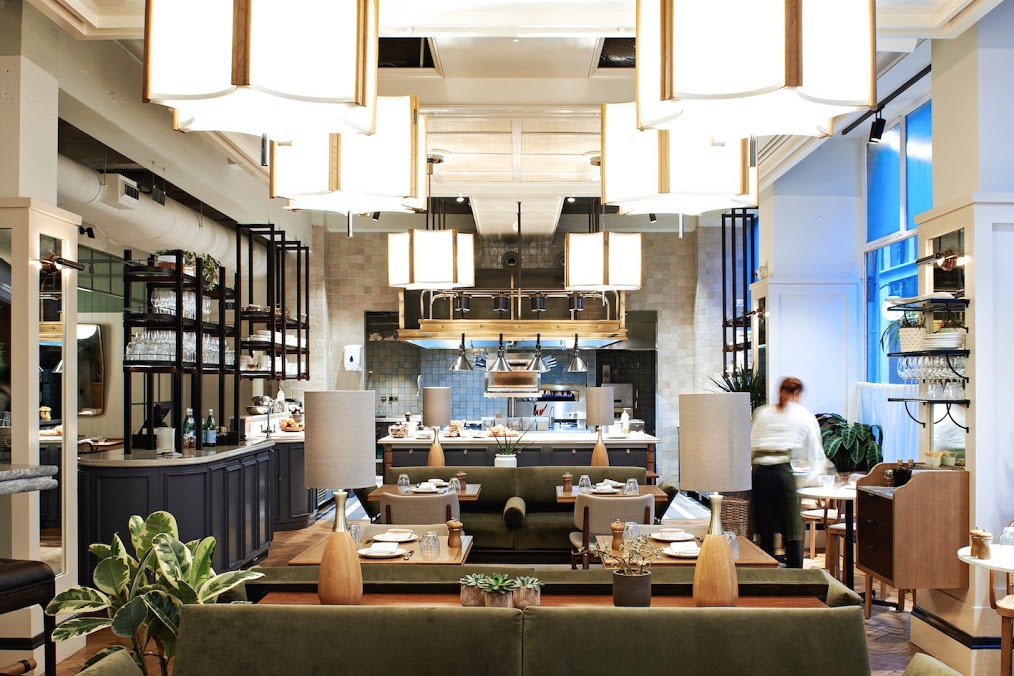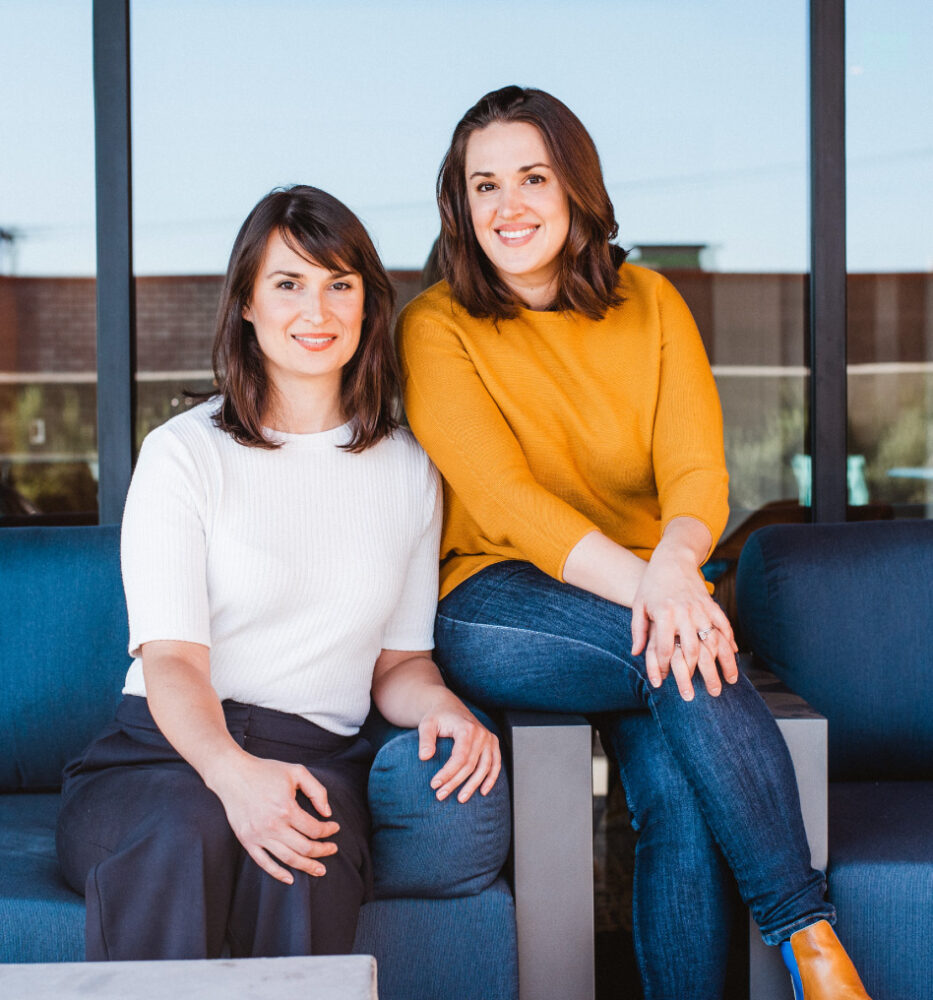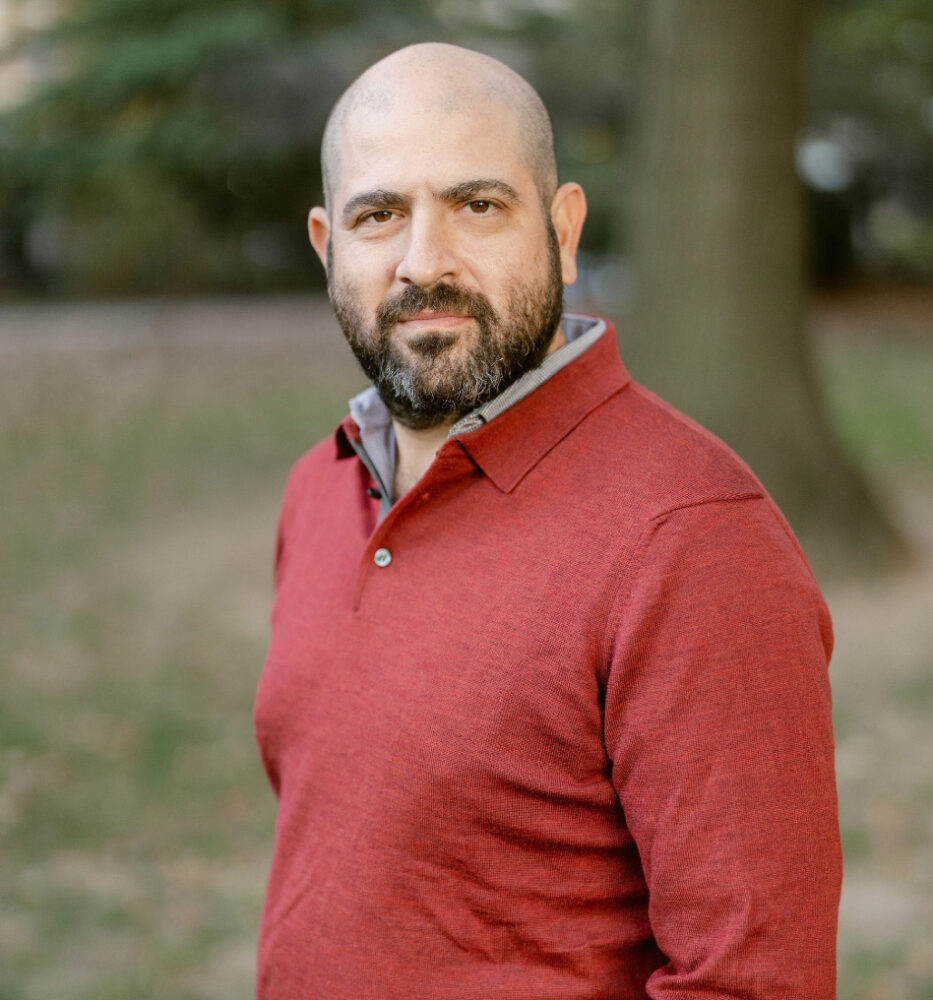Future Hospitality
podcast
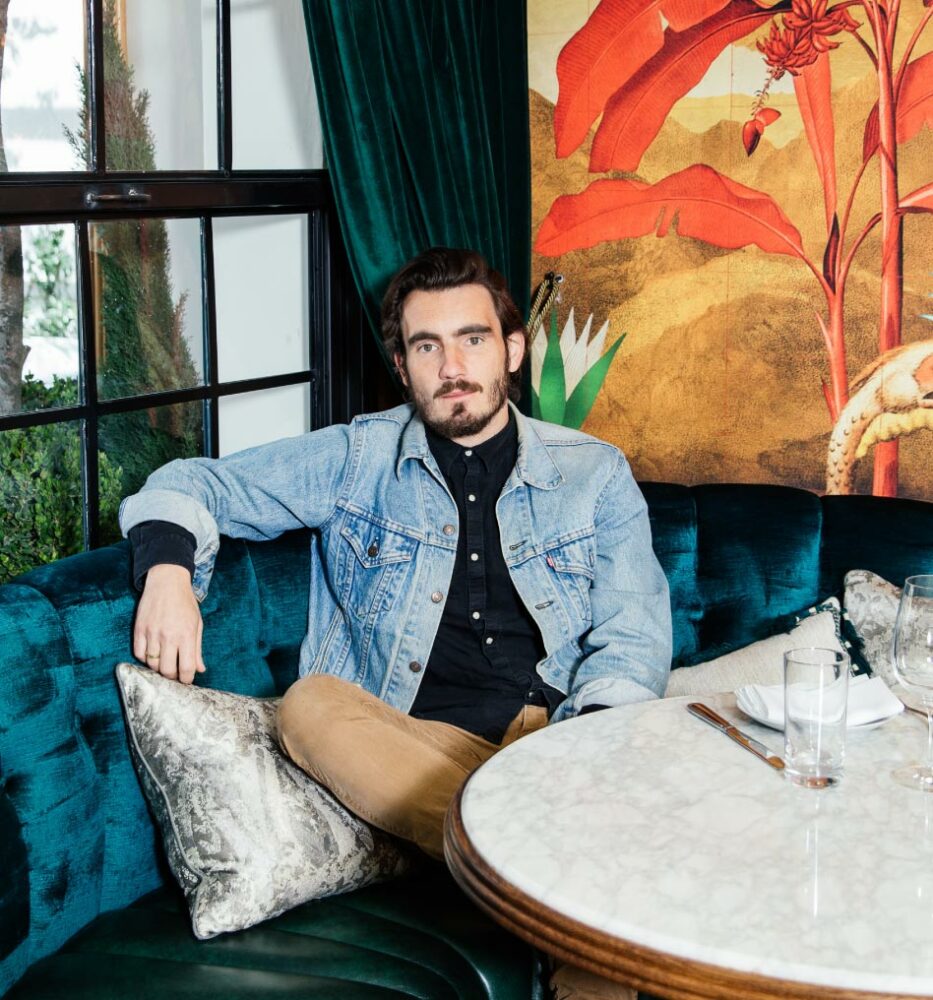
#23: Executing Great Design Amidst Creative Restraints: Tom Parker
March 9, 2021
Dustin Myers: Tom, thank you so much for joining us today.
Tom Parker: Pleasure. Thank you for having me on.
Dustin Myers: Well, I’ve been following your work for quite a while now and just really, really cool hospitality projects. So I’m excited to kind of hear some of your journey and dig into some of these projects and get to share you guys with our listeners.
Tom Parker: Thank you. Yeah, it’s been funny. It was like we’ve been kind of that going back and forth for years, trying to work on various projects together. So yeah, it’s good to get to see we’re evolving. Yeah, we love following what you guys are doing too. So the feeling is very much mutual.
Dustin Myers: Thank you. Appreciate that. So for those who aren’t familiar with Fettle, just give us a little bit of your background, how you got to where you are, and a little bit about your company.
Tom Parker: Well, we’re kind of a hospitality, mainly kind of hospitality design firm who also do occasional residential projects. We have an office in London, which my business partner, I co-founded Fettle with my business partner, Andy Goodwin, and he runs all of our European projects and I’m based in Los Angeles and I run all of our kind of US work, which is mainly kind of West Coast and LA focus, but we kind of also do work in New York, Miami. So a bit of a spread.
And we generally tend to do kind of relatively higher-end hotel projects, restaurants, members’ clubs. But we originally actually started, we both are from the UK. And we kind of started on more like quick turnaround, a lot of fast-casual, sort of lower-end stuff. It gradually sort of changed over the last five years since we started the company and sort of evolved into where it is now, kind of largely organically as well, which has been an interesting process. But we do stuff like Hoxton hotels and restaurants like Olivetta in Los Angeles, Moncks in Mayfair in London. We’re doing Hoxton Hotel in Rome and Italy at the moment, like SACO, a project called SACO for a company called Locke, which is really interesting a part of the hotel brand in Munich. So kind of all across Europe and all across the States, really, at the moment. That’s good to see. Exciting times.
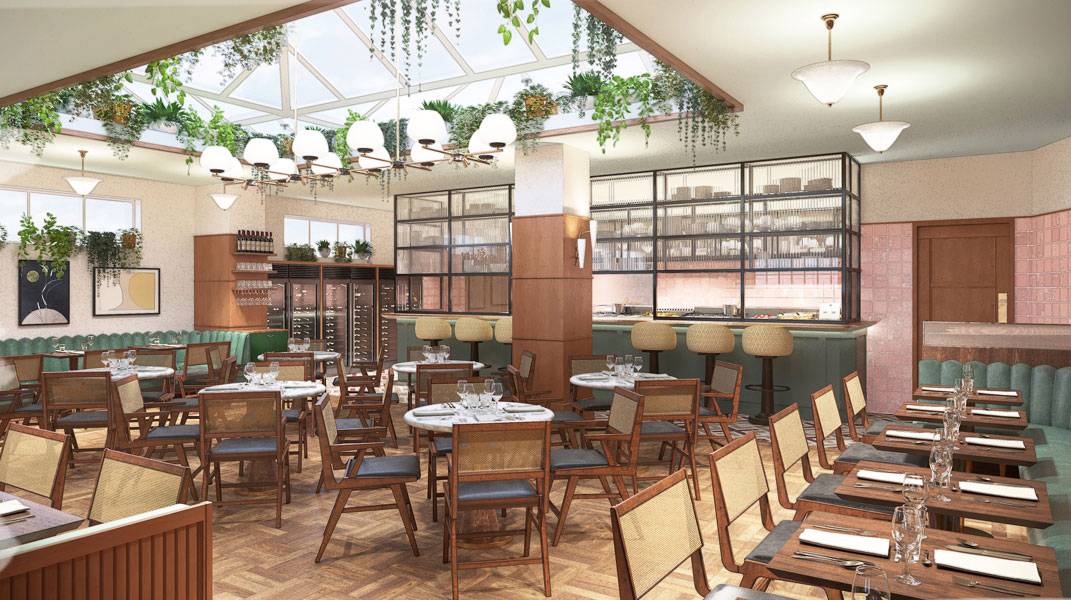
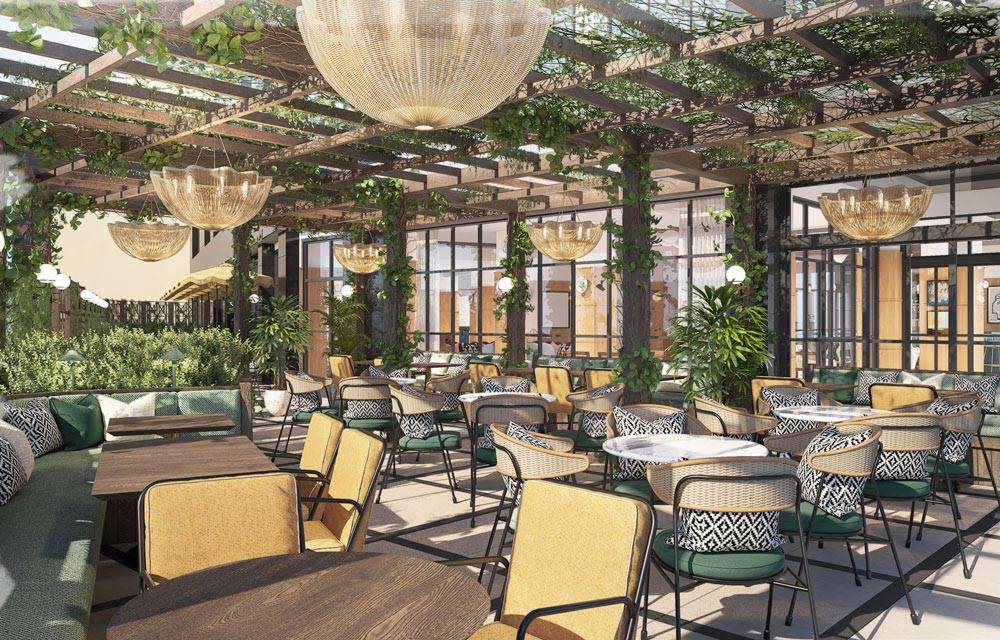

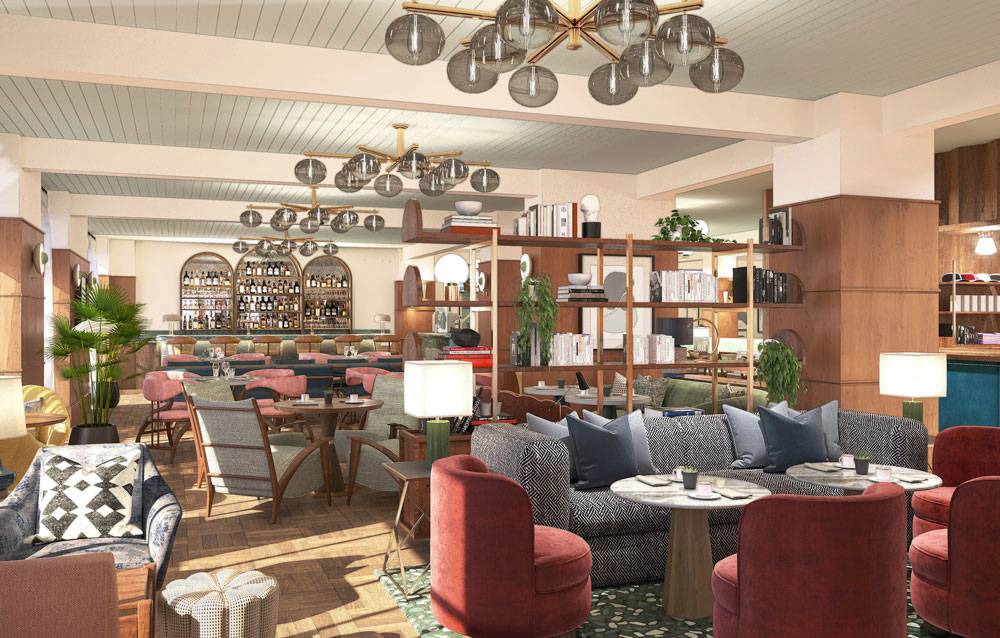
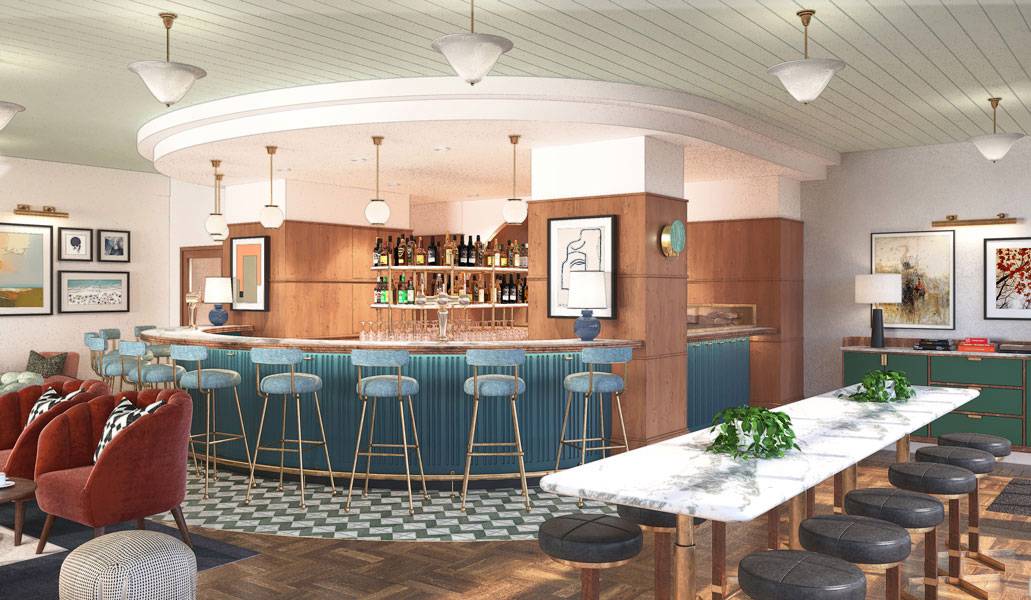
Jeremy Wells: For sure. Yeah. I love looking through your guys’ portfolio online and just seeing the design of all these spaces you’ve been involved. You can tell that you guys do really high-end stuff and have a really unique approach to the spaces that you’re creating. I’d be interested to hear a little bit more about, you already kind of touched on like that journey, starting out maybe with more fast-casual type stuff or just like a little bit lower-end offering. But what was like the transition and what was that journey like, getting more into like hospitality and diving a lot further into hotel and placemaking and these spaces you’re now working on?
“I think the one thing that runs through all of our projects is that we try and create a sense of nostalgia.”
Tom Parker, Fettle
Tom Parker: It was kind of an interesting one because I guess like the basic approach for all kinds of projects is very similar. You’re just trying to make these spaces that are great to be in. I think the one thing that runs through all of our projects is maybe that we sort of try and create like a sense of nostalgia. A lot of our projects have a slightly, even when we were doing the more kind of fast-casual, they were quite kind of quirky, unusual, fast-casual projects, but even then we were kind of trying to create almost a time and place. And that is one thread that definitely continued into the slightly larger, probably slightly higher-end projects we’re doing now. But yeah, when we first started, we were working with clients with that very, very initial idea that one company who are doing well in London now, kind of a pizza company called Yard Sale. And we had a mutual friend in common and we had just had this idea about all leaving their jobs and starting this company. And we were very much in a similar position. Andy and I had just left our jobs at a great company called Martin Brudnizki Design Studio, and we were kind of just starting out and they were kind of in the same place we were.
And so it had this really exciting sort of dynamic energy to it. And I think that gave us a real take. We both come from sort of a hotel hospitality, probably slightly higher-end background Martin Brudnizki does stuff like the Beekman Hotel in New York and Soho House. It was doing Soho House and now it does some very kind of top projects within the industry. And that was kind of what we were used to. So it was really refreshing because it’s almost like a kind of fresh start and starting from the ground up both with ourselves as a company and also with our clients. But I think the place-making thing that you touched on definitely applies to both of those worlds. And I think there’s a level of almost honesty and kind of grit to starting out, like when your clients are starting out on new ventures and that is just remarkably kind of, it’s a real buzz, I think that that being evolved at that stage. I imagine you guys must see that probably more than we do because you’re almost defining companies as they’re starting out, I guess.
Dustin Myers: Yeah, it’s really cool just to be in on those conversations and be in on that process when somebody has an idea and they’re trying to bring it to life and the work that we do really creates a lot of that, making it a reality, at least the beginning steps of what their company is going to be. And then moving through the different interior design and architecture parts of the project is just a really fun space to get to work in. I know that our clients and I’m sure yours are the same way. They’re excited about our meetings. All the other meetings and hoops you have to jump through to open a business may or may not be that exciting, but we’re fortunate to get to do the exciting stuff, I feel like.
“I think those early stages, it’s exciting and there’s a level of intensity that you don’t always get.”
Tom Parker, Fettle
Tom Parker: Yeah. Yeah. I totally agree. I think those early stages, yeah, it’s exciting and there’s like a level of intensity that you don’t always get, even on projects that we work on quite often. By the time you’re kind of on your way into construction, that level of intensity is like… everyone’s sort of settled into it a bit, into the project a bit, and it’s a bit less full-on and there’s a bit less kind of passion in terms of discussions and stuff. These early stages of the projects are especially new brands are fantastic, I think.
Dustin Myers: Definitely. So when you and Andy were deciding to leave the company that you’re with and start your new agency, your new company, what were some of the thoughts in your mind as far as what you aspire to be? What were your motivations? What did you want Fettle to become?
Tom Parker: I think, it’s funny to me. I’ve known Andy for probably 10, 10 or 11 years by that point and we’d worked at previous companies together as well. It’s just something that we kind of always sort of thought about doing. So it didn’t really feel like this massive kind of scary jump in a way. It was just this thing that we’d always kind of thought would happen at some point. But I think we wanted Fettle to be, I think that we wanted it to be very client focused. We didn’t want to get to a stage where we had a company where we weren’t like involved and dealing with clients and growing those kinds of relationships, which I think sometimes that when you work at bigger companies and it’s same for you guys, you go and work at big companies and you lose that kind of day to day being involved in projects, being involved with the clients, having this kind of relationship. Tons of our clients, almost all of our clients, have become a great friend and we’ve got this collection now. Like our next-door neighbor is the owner of a restaurant that we did here in Los Angeles and we became really great friends and then the place came up next door. So they’ve moved in next door. And we’ve got a slight network now of both here and in the UK where there’s network of great friends.
“Connection with people I think was important for us”
I think part of it was really like that connection with the project, connection with the clients, the less kind of business-y side of like connection with people I think was important for us and also just being able to be a bit freer with what we were designing and have a bit more variety in what we were designing and like Yard Sale and those kinds of projects, the kind of startups to work on more of that stuff where we did have that level of intensity and creativity that comes at the very start of an idea or a brand being born, I guess.
Jeremy Wells: Yeah. I love how you guys have still managed even with a lower budget projects, still managed to do incredible design within budgetary constraints and kind of thinking about or kind of discussing that, how do you still deliver such impressive design for your clients, but still managing any sort of budgetary constraints you might have for that project? What sort of thinking or methodology or approach you guys take to do that?
Tom Parker: It’s one that obviously comes up a lot for all industries, I guess. Everyone wants something that looks amazing, but not everyone wants to kind of pay top dollar for it. I think in what we do is really just about being very, very sensible and careful about how and where you spend that money. And I think there’s certain things that we as designers notice that the general public don’t necessarily like. Maybe subconsciously they pick certain things up for sure, but also there’s certain stuff that you don’t need to spend a ton of money on. And I think if you’re very careful and very just refined about where you make a statement and what you invest a bit more time and a bit more money in, I think you can have a huge impact on a sense of budget.
“Most of our clients don’t have ridiculous budgets for what they do. And often when they do, it’s more complicated.”
Tom Parker, Fettle
Most of our clients don’t have ridiculous budgets for what they do. And often when they do, it’s more complicated. We have a residential project and it’s not an unlimited budget, but it’s certainly healthier than a lot of our hospitality projects. And that in turn has its own challenges. And I think often budgetary constraints are beneficial for designers and definitely for us, sometimes it makes you think in a different way and work in a different way and use materiality differently to how you would if you had an unlimited budget, I think it’s definitely got its benefits for sure.
Dustin Myers: Yeah. I think within the creative process, having constraints is often very helpful and knowing where to go and what solutions to find.
Tom Parker: Yeah. And it’s really. If you can just pick anything and there’s no narrative and there’s no budget, then I don’t know, if it was kind of a bit pointless in a way, yeah. I think those kind of induced parameters with the free design narrative or through budget or through site or through client, I think they will make every project unique, really.
Dustin Myers: Yeah, absolutely. I’ve noticed that like projects that we’re doing for ourselves without a client and without the hard restraints that we’re trying to work on are often the hardest, just because you could do literally anything. So it’s hard to know what to do.
Tom Parker: Yeah. It’s incredibly challenging because I imagine when you kind of do your own kind of brand building and also when you’re in the thick of it, especially when you’re working on your own kind of collateral in your instance, I can’t even imagine how difficult that is. We don’t deal with that end of work. So when we did our kind of branding and marketing and website a lot of a few years ago, fortunately, we outsourced it because I think, like you say, without some form of client constraints, I don’t know, you’re just kind of floating in this endless sea of options, which is quite difficult.
Dustin Myers: The work in your portfolio is so impressive. It’s very cutting edge, very modern, but it does have that nostalgia that you talked about. Do you ever have tension with clients on pushing ideas that are maybe outside of their comfort zone or not what they were expecting and how have you been able to navigate that?
“… it’s this kind of balance between we do a lot of traditional kind of work that has an unusual element in some way.”
Tom Parker, Fettle
Tom Parker: That’s a good question. I think more or so probably in the last year or two clients are more aware. When they come to us, they’re more aware of what we do as a company, I think. And I think there’s a general approach to design is that there’s a lot of traditional elements, but then there’s usually something a bit of a twist on it or a bit unexpected. And it’s this kind of balance between we do a lot of traditional kind of work that has an unusual element in some way. And I think most of our clients are aware of that. And to be honest, we don’t often get kind of calls completely out of the blue. It’s usually come through. I would say probably 80% of our clients have come through another client or word of mouth or a friend or someone we’ve met kind of along the way. And so they have an awareness of what we do.
So I think often when we suggest stuff, they’re not always necessarily kind of too shocked by some of the stuff we’re putting forward. But that said, there are definitely instances where there’s been a couple of disputes. There’s always a couple of elements. I think if you’re not in some way pushing the boundaries of where the clients are comfortable, then what are they paying you for really? They could just design it themselves. So I think surprising them sometimes is actually a good thing, obviously. There’s definitely been times where we scared clients. I think that’s the same for all designers. There’s always that kind of dialogue with a client where if one of you gets a bit off track or bit overexcited and you present something, they’re like, “I don’t know.” But it happens.
Yeah. I think it happens less. I think so as a company, I’m sure the same to you guys as well. As you kind of grow and you have this kind of larger and larger body of work that you’ve completed, people are more and more used to the general parameters within which they can expect you to work.
Jeremy Wells: Yeah, definitely. Is there any things that you and Andy, through the years, kind of looking back, wish you had maybe learned earlier when it comes to the projects that you’re involved with? As far as like dealing with clients or budgets or some of these things we’re talking about or just in general, anything else you wish you’d learned earlier in the process?
“I think that every project needs to be approached in a different way, and not only from a design perspective but also from your relationship with the client and what that person is trying to achieve…”
Tom Parker, Fettle
Tom Parker: That’s a really good question. I think from my perspective, I would definitely say that these projects we do aren’t really about, this can sound a bit strange, I’m not really thought it through, so it might not make any sense. But I think that a lot of the projects we do aren’t really about design to an extent, they’re about people and being able to understand what kind of people are trying to achieve. And I think if I’d realize that earlier, it would have definitely affected how, I personally, I can’t speak, nowadays has kind of got a different approach to design in many ways. But from my own perspective, definitely, I think that every project needs to be approached in a different way, and not only from a design perspective but also from your relationship with the client and what that person is trying to achieve and how are they going to go about achieving that and how are they going to drive you to achieve kind of what they want.
So in some ways, I think, realizing early and it’s probably quite our line of work is kind of slightly weird and niche in a way. But I think if I’d learned earlier that every client and every project, one uniform approach won’t work on a personality based level, one uniform approach won’t work for everyone and for all clients and for all projects, I think would have been helpful.
Dustin Myers: Yeah. I think that’s really good. So you’ve got a fairly small team headquartered in London and an office in LA. How are you guys able to work across that distance as a seamless team?
Tom Parker: This is like a really, really obviously interesting topic at the moment, but I think just because of how we had originally set up, even when it was just Andy and I, I was in New York and he was in London, so we’ve always worked remotely. It’s definitely at times had its challenges, especially early on. But I think especially with what’s happened in the last year, everyone is really starting to realize how easy that is. I feel like we were very, very accidentally one step ahead of that because we’ve always worked in that manner. The way people are working now, since day one of the company, we’ve always worked like that.
Before the pandemic, I would travel back and I’d spend probably three months of every year in the UK. But we would be in the same place for a quarter of the year. And as the company has grown and we’ve got staff in design as in both offices, they’ve got used to working in that way too. If you try now, and I think this is probably why maybe other companies have found this period more challenging. If you try and implement something, once you’re already grown as a company, it’s just so much harder, but because we’ve innately done it, I’m not claiming this is any kind of very genius advanced planning, it was just through personal life kind of situations that we were in separate countries and that kind of thing that forced us into building the business the way we have, which is in turn giving us access to a lot of our clients in LA, our London projects, and a lot of people in London come to us because of the aesthetic effect, having on our work, having work in America. So it’s definitely changed what we do as a company and vice versa as well. So I think out of a sort of geographical situation, it’s built an aspect to the business that we may not have had otherwise.
Jeremy Wells: Yeah, that’s really cool. I think you guys were definitely situated well for going through a pandemic and being able to already pivot, not really need to pivot really though the way you structure your business. So that’s really cool to hear that. Looking back at your whole portfolio online, you have a number of projects on there and I’m sure you have many more that aren’t even on there. But what are some of the most or what are some of the projects that you’re most proud of or things that you and your team have accomplished or done that you’re most proud of?
“… it’s really nice to have that kind of input from the kind of different ends of the spectrum in a way. And I think one teaches you a lot about the other.”
Tom Parker, Fettle
Tom Parker: Probably the variety. I really liked the variety of clients that we work with just because there are some really huge, well-known brands that we work with, but also we’ve got some great one-off restaurant operators. I think it’s really nice to have that kind of input from the kind of different ends of the spectrum in a way. And I think one teaches you a lot about the other. And I think it’s been very hard to maintain that. So I would say that I think we’re proud. As a company, we’re proud of having been able to work with. We still work with startups and kind of brand new companies. We work with like some kind of well-known larger brands and one is restaurants and kind of everything in between and the occasional residential projects as well.
I think it’s very easy to almost fall into a certain niche. We maybe fall into or kind of just end up just doing a specific type of hotel project or you end up doing just these small startups. We had quite consciously managed both ends of the spectrum to keep both ends moving and to complete projects in both kind of sides of that spectrum. And I think that’s probably one of the few things that consciously we’ve done that we are definitely quite pleased with.
You’re doing stuff like Yard Sale in the early days and even Olivetta in LA is kind of one-off restaurant client really that we’ve really kind of started and grown with. And then we also work with Hoxton hotels and doing Maslow’s. Soho, we’re working on at the moment in London. So it’s a real kind of wide range of scale of company, which I feel like we’ve learned a lot from doing that consciously as well.
Dustin Myers: Yeah. I think that probably keeps you guys fresh and keeps all the different perspectives in mind as you’re approaching new projects that you’re not just stuck in one type, but that there is variety and that probably keeps it interesting for you, but also the different experiences all funnel into the new projects to make them as good as they can be.
Tom Parker: Yeah. Yeah, absolutely. And like some of the stuff, some of the ideas we come across working with the Hoxton’s are amazingly helpful, applying those to kind of new startups, because Hoxton and if more grew from this one idea and they’ve grown into this kind of fantastic, but big company that do these great worldwide projects. They’ve successfully transitioned from one end of our clients back from to the other. We went working with them in the early days. I can’t claim any credit for that. But yes, it’s just really interesting to see how this whole path of the company’s taken. I’ve definitely learned a lot both by design, but also about business as we grow as a company as well.
Dustin Myers: Definitely. If you could dream up your perfect project, what would you be excited about working on and what would that look like?
Tom Parker: I think it could be kind of a mix of things. I think that it would definitely be kind of a sustainability element to it and also probably a kind of creative sort of creative reuse element. I think a lot of the projects we do that I personally find more kind of satisfying our way. You’re sort of taking older building that’s maybe kind of fallen by the wayside and kind of bringing it back to life again. So I think it would be sort of sustainable creative reuse, sustainable creative reuse projects really. We’ve got a few actually. We’ve had a few inquiries recently along those lines. And I think that’s just such an exciting field, I think, especially now people are seeing, you’re seeing these huge kind of creative reuse projects be extremely successful, like The High Line in New York is a very, very obvious example. But people refreshing parts of cities and buildings that once had this some kind of glory, but have fallen kind of… not necessarily disrepair, but just into kind of generic blandness or being underused. I feel like there’s so many spaces within every city that that can be a benefit and people get to use these great spaces again.
Jeremy Wells: Yeah, those types of projects are really cool to look into and see how they’ve managed to do such unique things with specific constraints and things like that. So that’s really cool to hear that. Looking ahead kind of into the future of the industry and then into the future of Fettle, you’ve already mentioned I think a couple projects that you guys are currently working on. But are you able to share anything about any upcoming projects that are really unique or really cool?
Tom Parker: Yeah. Definitely. We’ve got like a few kind of interesting bits, a couple of bits that we’ve been on for a while that are finishing pretty soon like Hoxton in Rome, for example. We’re also working on a really interesting project in LA called The Georgian Hotel, which is this old 1933 built kind of deco building on Ocean Avenue, overlooking the sea and at the time had this great history of being this sort of apartment hotel that people from Hollywood would go, which seems mad because only a few miles, but they go and spend the summers at this building in Santa Monica. So we’re working on the refurbishment of that, which I think is probably scheduled to open late this summer. And then in London, we’ve got a few really interesting bits over there as well. Probably most notably of which is a group called Maslow’s who already have one site called Mortimer House. We’re working on their second project at the moment also in London. And that’s the kind of, again, a great historic early 1900s building. And their concept is sort of members co-working with great food and beverage offerings. And this, again, a really interesting project. It’s great, it’s amazing kind of shell over sort of Edwardian baroque building. So it’s, again, really interesting. It kind of ties in with what we’re talking about before in terms of reuse projects. Yeah, bringing a bit of the good old days back to these historic buildings that have been kind of broken up and used as offices and different things. It’s really interesting.
Dustin Myers: Yeah. That’ll be exciting to see how all of that comes out. We’ll definitely be watching for that.
Jeremy Wells: You’re living a dream too.
Tom Parker: I’ll keep you guys posted. Well, it doesn’t always seem like it. It’s the same for everyone. Isn’t it? It’s very easy to look elsewhere. Like, “Oh, they did a great job.” But there’s companies I look at that I just thought, “Oh, man, these guys are just doing nice, amazing work. How did they do it?” It’s fun. Everyone, I think it’s so easy, isn’t it, to be like, “Oh yeah.” It’s great over there in New York. In reality, it’s probably equally as tough as it is everywhere.
Dustin Myers: Definitely. Last year was pretty tough on the hospitality industry. It feels like we’re starting to get our feedback under us and I’m starting to see some life again. As you look to the future of the industry, what do you think is going to shape that? Or what do you think that we’re going to be seeing in that?
“I think everyone’s had a rough time, but I think it has moved us forwards.”
Tom Parker, Fettle
Tom Parker: I think there are very obvious things that are going to shake the industry. But I also think that last year have been a nightmare for a lot of people. And there have been times where us as business owners have also been very, very difficult and projects stopped and got on hold. I think everyone’s had a rough time, but I think it has moved us forwards. I think obviously sustainability and technology will for sure have an impact, but I also think that this time is and it’s something I think I personally always thought about a lot, but I think this time has also made everyone realize how important sort of human connection is. And although a lot of hotels, a lot of these places are going kind of technology-based and sort of people and service free, I do think that on a personal level, it’s definitely made me realize how important kind of interaction and human connection is. And I think the more technology develops, the more people are also becoming aware of the dangers, the dangers of that, and I think it’s selective use of these developments and technology. But then also kind of being very aware of the importance of human and kind of interaction and connection and the importance of people all done in a kind of sustainable way, I think, is probably… obviously, I can’t speak for the whole industry, but I think it’s definitely something to offer and talking to us about at the moment and we know where that’s going. So yeah, a bit of a mixture, I guess.
Dustin Myers: Yeah. I think this sustainability and technology is definitely going to play a role in kind of the recovery and just how things going to be looking moving forward. So I’m excited to see how you guys navigate that and just the power of design on a space I think is a really neat thing to watch evolve. So I think that kind of wraps it up. Thank you so much for joining us today. Thank you for your insights. It was a pleasure, just getting to learn more about your background and some of the things that you have on the horizon. We’re definitely going to keep watching what you guys do and hope you keep up the good work.
Tom Parker: Thank you. Thank you for having me on the podcast. I’ve listened to pretty much every episode. I learned a bunch from it. So it’s nice to be on it and hopefully get to work with you guys in some of the upcoming projects as well.
Jeremy Wells: Awesome. Thank you, Tom. It’s good to hear that at least one person’s listening.
Tom Parker: Definitely. I’m going to listen to pretty much everyone so far. So keep them coming.
Dustin Myers: Cool. Thanks, Tom.
Tom Parker: Pleasure. Thanks guys.
